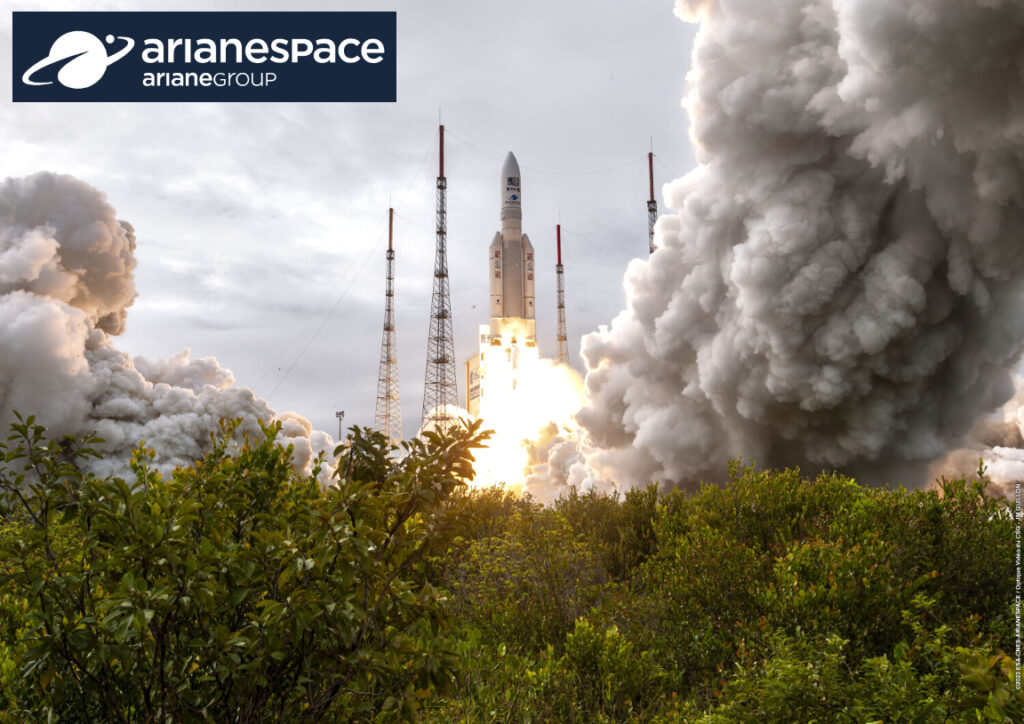
On April 14th, 2023, at 09:14 a.m., local time, an Ariane 5 launcher operated by Arianespace successfully lifted off from Europe’s Spaceport in Kourou, French Guiana, carrying the European Space Agency (ESA) JUICE space probe.
The JUICE spacecraft, built by Airbus Defence and Space for ESA, is en route to carry out Europe’s first mission to Jupiter.
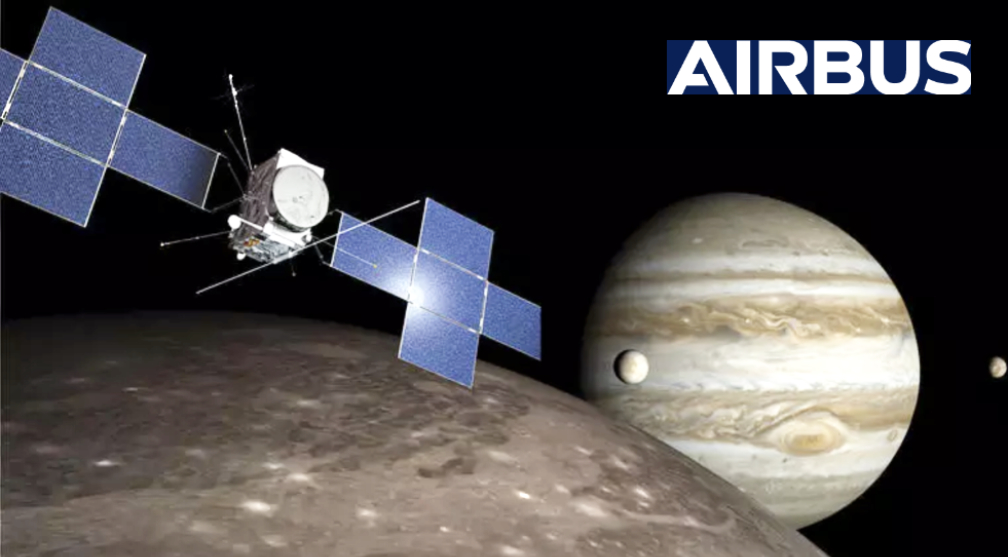
JUICE will spend at least three years making detailed observations of the planet’s icy moons: Europa, Ganymede and Callisto, and will arrive at the Jovian system in July of 2031.
JUICE will study these moons as potential habitats for life and will address two key questions: what are the conditions for planet formation and the emergence of life, and how does the solar system work?
The propulsion system for the JUICE spacecraft was developed, built, and integrated in Germany by ArianeGroup’s Orbital Propulsion teams, and is comprised of the 400 N main engine that will be used for the Jupiter orbit injection, 20 small thrusters, and two titanium propellant tanks.
After this mission, one Ariane 5 launch remains before Ariane 6 (artistic rendition below) takes up the baton, supporting Europe’s institutional missions and meeting the rapidly growing needs of the commercial market.
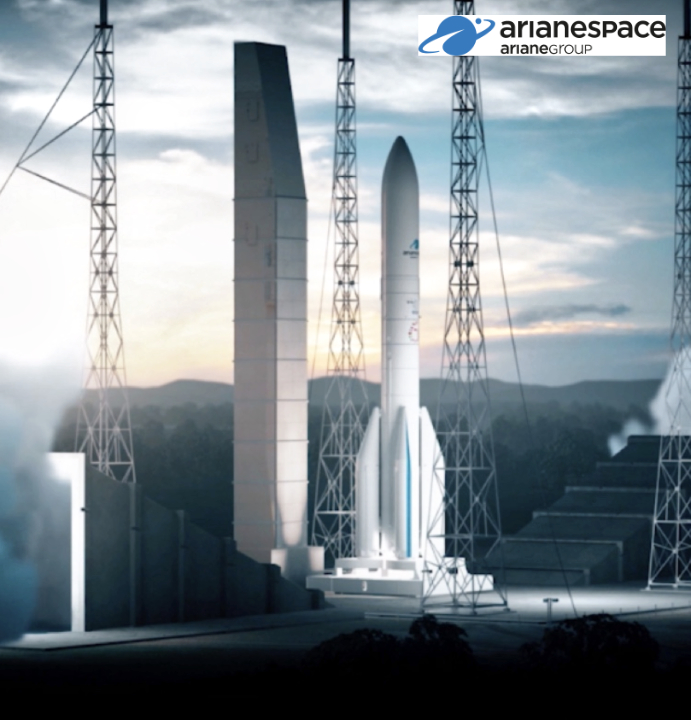
The Ariane 5 heavy-lift launcher is an ESA program carried out in cooperation between public institutions and industry across 12 European partner countries.
ArianeGroup is the lead contractor for the development and production of Ariane 5, as well as being responsible for launcher preparation operations up to lift-off. As prime contractor for Ariane 5 and Ariane 6, in charge of development and production, ArianeGroup is at the head of an industrial network comprised of more than 600 companies, including 350 small and medium-size enterprises (SMEs).
ArianeGroup delivers a flight-ready launcher on the launch pad to its subsidiary, Arianespace, which markets and operates Ariane 5 from Europe’s spaceport in French Guiana. During launch campaigns, Arianespace works closely with the CNES, the French space agency, the design authority for Ariane 5 and responsible for the satellite preparation facilities and the launch base.

“Arianespace is honored to have been entrusted with this launch, the first European mission to Jupiter, and to play a part in expanding our understanding of the solar system and the necessary conditions for the emergence of life. In preparing for this mission, we have worked hand in hand with ESA, Airbus Defence and Space, ArianeGroup, and French space agency CNES. I take this opportunity to thank all the teams who have given so much for 10 years to bring us to today’s successful result. And good luck to//JUICE for the incredible journey it is about to embark on.” — Stéphane Israël, CEO of Arianespace
“With the successful launch of the JUICE space probe, Ariane 5 has once again made its contribution to European space history. This exceptional mission benefited twice over from ArianeGroup’s expertise: we not only built and prepared Ariane 5 for this mission, but we are also involved in the JUICE spacecraft as we developed, supplied, and tested the entire propulsion system which will enable the probe to make its eight-year journey to Jupiter. I want to thank the teams from ArianeGroup and Arianespace, together with all our European partners, for this latest success of the Ariane launcher. Our launcher’s high reliability is due to the unfailing cooperation between the industry, ESA, and CNES, the guarantee of Europe’s independent access to space.” — Martin Sion, CEO, ArianeGroup.
Airbus-built JUICE begins its epic odyssey

At 14:00 UTC on April 14th, 2023, JUICE (JUpiter ICy moons Explorer) spread its wings following the Ariane 5 successful lift-off two hours earlier.

The ESA spacecraft operations team at the European Space Operations Centre (ESOC) in Darmstadt, Germany (photo below), took control of the spacecraft and confirmed reception of the first telemetry and the smooth deployment of the solar arrays. The Airbus-built JUICE is now officially on its way to Jupiter.
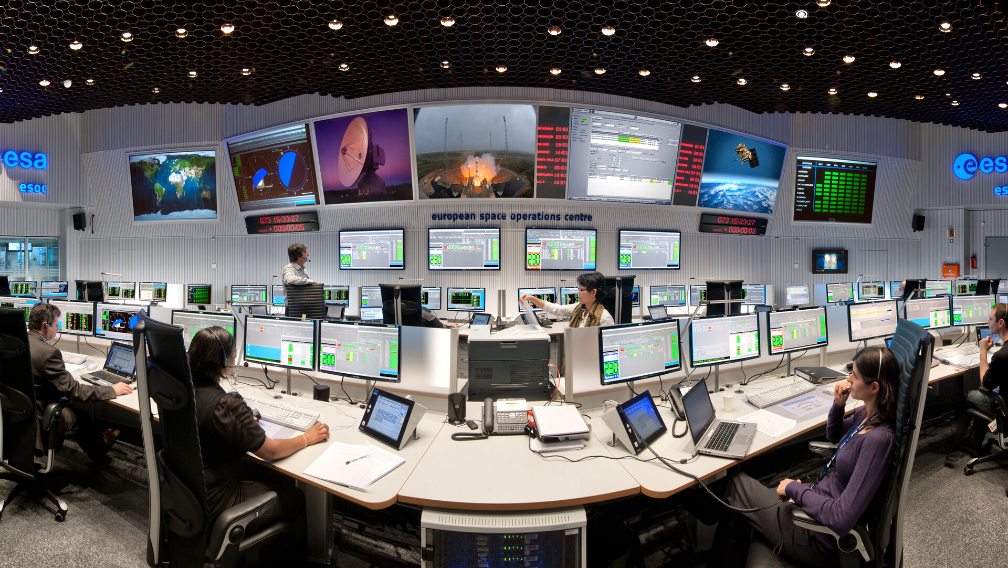
Additional equipment and instruments will be progressively turned on in the next few days and the operations team will run tests to make sure they are all fully operational. Airbus has a long legacy of supporting the European Space Agency with all its interplanetary missions. These missions present unique challenges which require pushing space technologies to the limit, and JUICE is no exception, with the largest solar arrays ever built for a science mission.
Bringing together 80 partners across 23 countries and harnessing the brainpower of 2,000+ people, Airbus has designed and built JUICE under contract to the European Space Agency (ESA).
On its over 5 billion kilometer long journey, the 6.2 ton JUICE spacecraft will make a series of flybys of Callisto, Ganymede and Europa, collecting data to try to understand whether there is any possibility that the moons and their subsurface oceans could host microbial life.
Carrying 10 state-of-the-art scientific instruments, including cameras, spectrometers, an ice-penetrating radar, an altimeter, a radio-science experiment, a particle package and various magnetic and electric field sensors, the JUICE spacecraft will complete a unique, four year tour of the Jupiter system. JUICE is due to arrive at Jupiter in 2031 after a series of gravity slingshots from Venus and Earth to propel the spacecraft on its way.

“After years of work, watching this launch live from our sites across Europe was a very emotional moment for all those who have worked on this incredible mission. This is the best of Europe coming together. I’m eager to see the next big thing coming from the European space community.“ — Michael Schöllhorn, CEO Airbus Defence and Space from Kourou
Previous information postings…
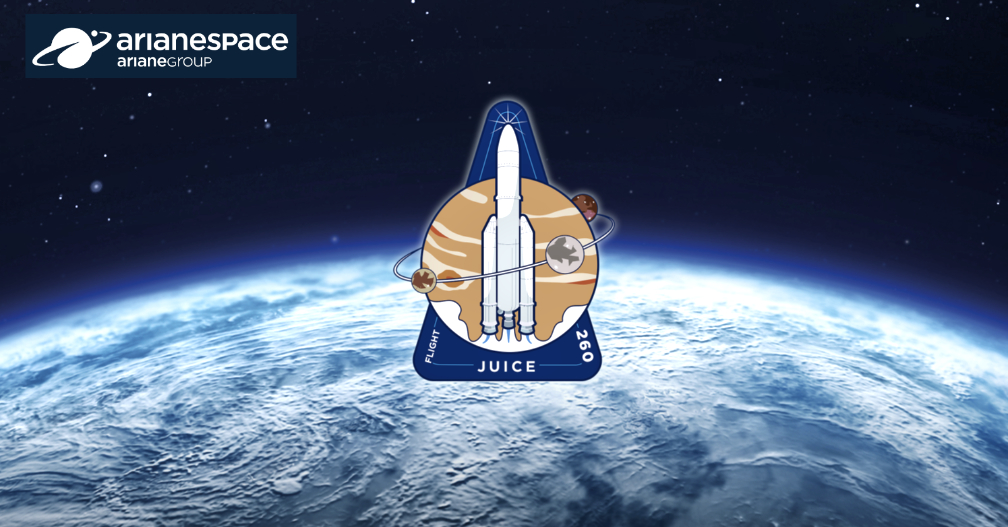
Arianespace’s Flight VA260 has been delayed due to weather condition (risk of lightning) at the scheduled liftoff time from Europe’s Spaceport in French Guiana.
The Ariane 5 launch vehicle and its passenger, JUICE, are in stable and safe condition.
The new targeted launch date is April 14, 2023, at:
- 08:14 a.m. Washington, D.C. time,
- 09:14 a.m. Kourou time,
- 12:14 p.m. Universal time (UTC),
- 02:14 p.m. Paris time,
- 12:14 a.m., April 15, Tokyo time.
On April 13th., Arianespace is scheduled launch the JUpiter ICy moons Explorer (JUICE) space probe for the European Space Agency (ESA) on board its first Ariane 5 mission of the year from Europe’s Spaceport in French Guiana.
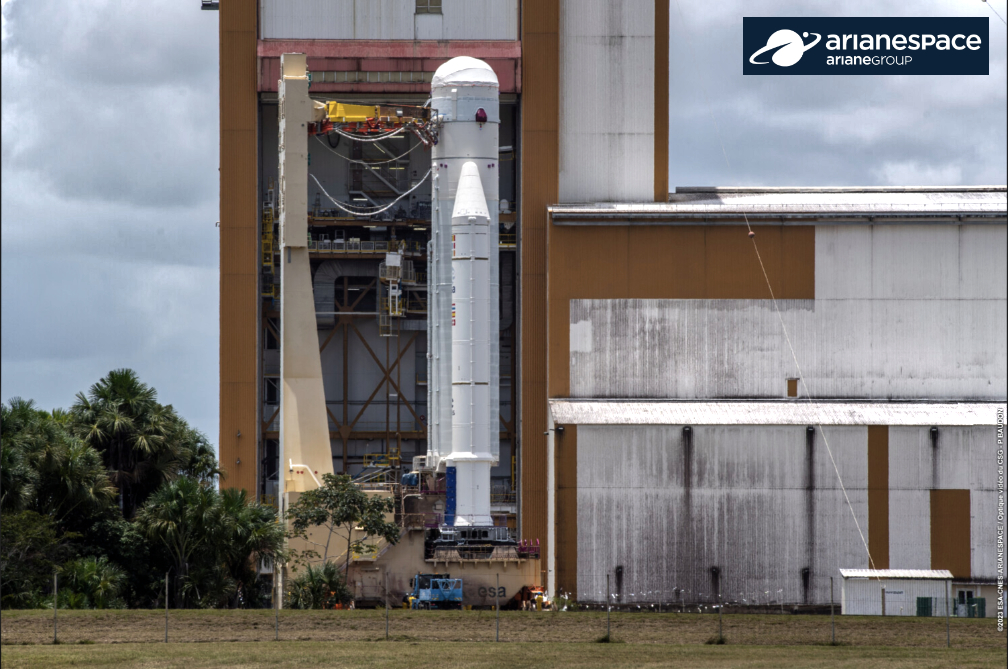
Flight VA260 will be Europe’s first mission to the Jovian system. The passenger, the JUICE space probe, will spend at least three years making detailed observations of Jupiter’s icy moons Europa, Ganymede and Callisto. Built by Airbus Defence and Space, JUICE will enter in orbit around the giant planet in 2031 after an eight year cruise that will include gravitational assists from Earth and Venus.
For this mission, the Ariane 5 launcher will require more than 6 metric tons weight performance and will aim for an Earth escape trajectory. After the separation at an altitude of 1,538 km, JUICE spacecraft will ultimately reach an infinite velocity of up to 2.5 kilometers per second, once out of the Earth gravitational field.
The spacecraft will be Europe’s first mission to Jupiter. The probe will spend at least three years making detailed observations of its icy moons: Europa, Ganymede and Callisto. JUICE will study the moons as potential habitats for life, addressing two key questions: what are the conditions for planet formation and the emergence of life, and how does the Solar System work?
JUICE will carry the most powerful scientific payload ever flown to the outer Solar System that consists of ten, state-of-the-art instruments, plus one science experiment that uses the spacecraft telecommunication system with ground-based radio telescopes. The spacecraft will enter orbit around the giant planet in 2031.
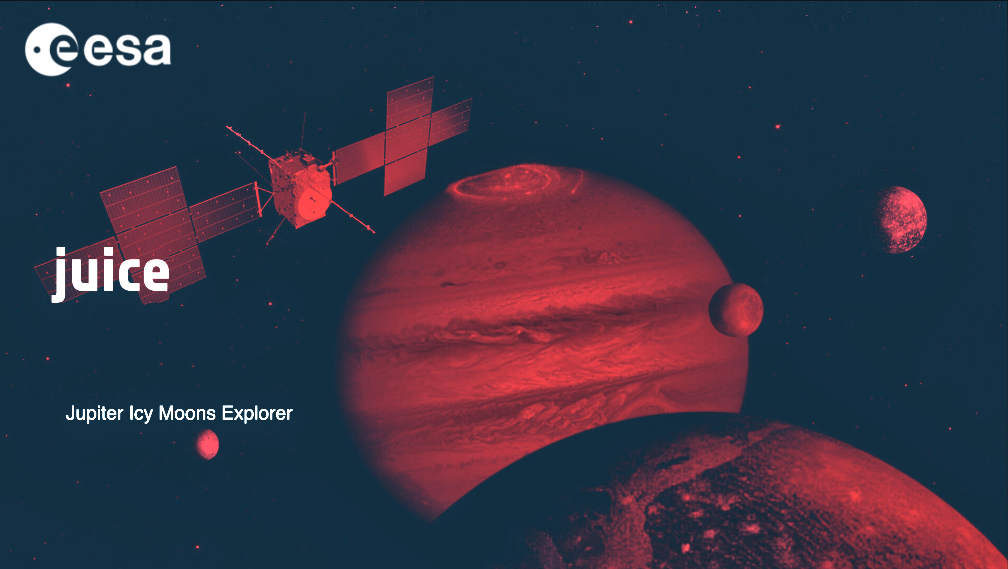
The space probe will make detailed observations of the giant gas planet and its three large ocean-bearing moons and will characterize these moons as both planetary objects and possible habitats, explore Jupiter’s complex environment in depth, and study the wider Jupiter system as an archetype for gas giants across the Universe.
JUICE, is the first ‘large-class’ mission of the Cosmic Vision science program. This current planning cycle for ESA’s space science missions includes a series of three exoplanets missions that will keep Europe at the forefront of this growing field, each tackling a unique aspect of exoplanet science.

The launch, at a glance:
- 346th launch for the Arianespace launcher family (309th launch from the Guiana Space Center).
- VA260 will be the 30th scientific mission to be launched by Arianespace.
- 116th launch of Ariane 5, overall.
- JUICE will be the 10th satellite launched by Arianespace on a liberation’s orbit.

